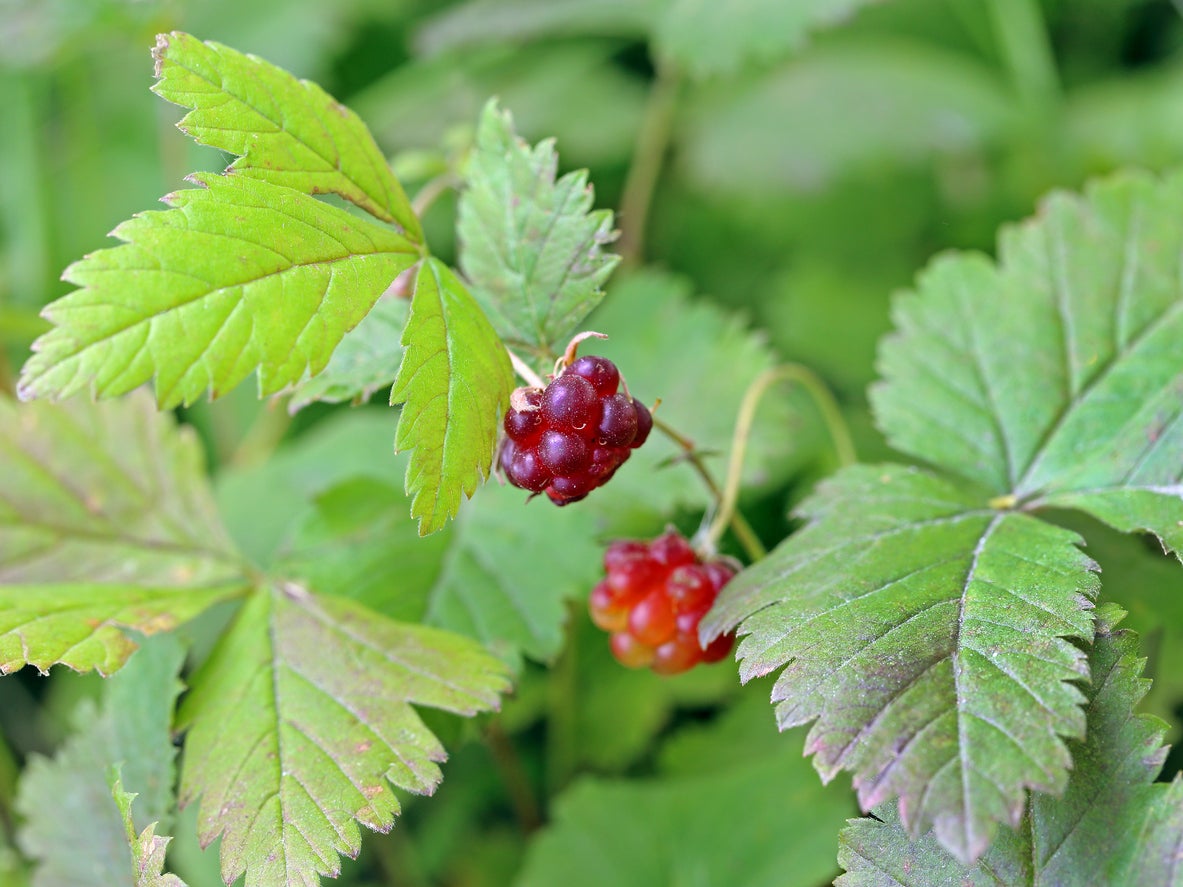Arctic Raspberry Groundcover: Tips For Growing Arctic Raspberries


If you have an area that's difficult to mow, you can eliminate the problem by filling that space with groundcover. Raspberry plants are one option. The low-growing, dense matting attributes of the arctic raspberry plant make it a sensible choice, plus arctic raspberry groundcover produces edible fruit.
What are Arctic Raspberries?
Native to northern areas of Europe, Asia, and North America, the arctic raspberry's natural habitat includes coastlines, along rivers, in swamps, and throughout soggy meadows. Like raspberries and blackberries, arctic raspberries belong to the genus Rubus. Unlike these close cousins, arctic raspberries are thornless and they don't grow tall canes.
The arctic raspberry plant grows as a bramble, reaching a maximum height of 10 inches (25 cm.) with a spread of 12 inches (31 cm.) or more. The dense leaves deter weed growth, making it quite suitable as groundcover. These raspberry plants also provide three seasons of bountiful beauty in the garden.
It begins in the spring when arctic raspberry groundcover produces brilliant blooms of pinkish lavender flowers. These develop into deep red raspberries by midsummer. In the fall, the arctic raspberry plant lights up the garden as the foliage turns a crimson burgundy color.
Also called nagoonberries, arctic raspberry groundcover produces smaller berries than commercial varieties of either raspberries or blackberries. For centuries, these prized berries were foraged in places like Scandinavia and Estonia. The berries can be eaten fresh, used in pastries and pies, or made into jams, juices, and wine. The leaves and flowers can be used in teas.
Tips for Growing Arctic Raspberries
The sun-loving arctic raspberry plant is extremely hardy and can be grown in USDA Hardiness zones 2 through 8. They do well in all types of soil and are naturally pest and disease resistant. The arctic raspberry plants die back in winter and they don't require pruning like most types of cane berries.
Arctic raspberry groundcover typically bears fruit within the first two years of planting. Each arctic raspberry plant can produce as much as 1 pound (.5 kg.) of sweet-tart berries at maturity. Like many types of raspberries, arctic berries don't store well after harvest.
Gardening tips, videos, info and more delivered right to your inbox!
Sign up for the Gardening Know How newsletter today and receive a free copy of our e-book "How to Grow Delicious Tomatoes".
Arctic raspberries require cross-pollination to set fruit. Two varieties, Beta and Sophia, were developed at the Balsgard Fruit Breeding Institute in Sweden and are commercially available. Both produce flavorful fruit with attractive flowers.

Laura Miller has been gardening all her life. Holding a degree in Biology, Nutrition, and Agriculture, Laura's area of expertise is vegetables, herbs, and all things edible. She lives in Ohio.
-
 Terrifically Tubular Flowers For Hummingbirds: 9 Tube-Flowered Plants To Attract Hummers
Terrifically Tubular Flowers For Hummingbirds: 9 Tube-Flowered Plants To Attract HummersGrowing tubular flowers for hummingbirds helps you create the optimum feeding conditions for your winged friends. Here are nine tubed delights for hummers
By Tonya Barnett
-
 How To Grow Hydroponic Tomatoes For Fresh Indoor Harvests – No Soil Required
How To Grow Hydroponic Tomatoes For Fresh Indoor Harvests – No Soil RequiredLearning how to grow tomatoes in water is easy and allows you to harvest fresh-home-grown produce in every season without any mess.
By Ellen Wells